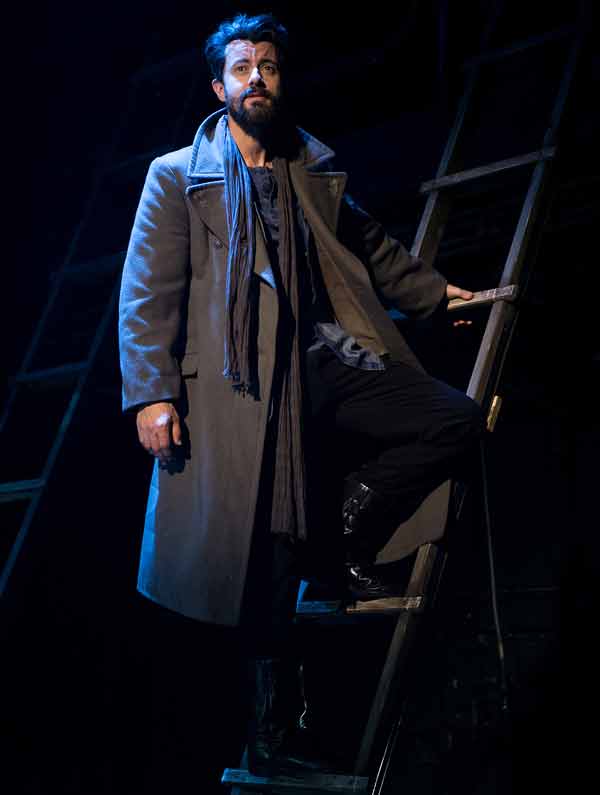Sport For Jove's most recent incarnation is a show you really want to like.
It is its own beast, attempting to tell a story of diversity separate to the original story authored by Herman Melville in 1851. The set, costumes, lighting and sound make the performance a typical work of Director Adam Cook, bringing the whirlwind of voices, energy and bustle of an 1850s whaling ship to the Reginald stage.
There’s no real way to do Mark Thompson's set design justice. Within a stage backed by four floor-to-lighting-rig wooden boards (hiding an impressive drum set), two ladders placed on each respective side of the performance space function beyond their literal means to become whales, barriers and planks.
More often than not actors don't leave the stage but simply duck into peripheral view below lighting catwalks, resting on couches or simply sitting. You get a real sense of being on a ship and the kind of community that would typically come with it, complemented by immense 'Pirates of the Carribean'-esque costuming and some sophisticated lighting decisions by Lighting Designer Gavan Swift.

Image © Marnya Rothe
Yet, even for its visual strengths, the crux of the show is missing.
We see many minor characters actors variously put on American, British, Australian and Irish accents. For many reasons a unilateral decision to retain Australian accents may serve well.
There is a lack of onstage connection between the cast. Chorus scenes hard to watch as each actor understands their own objectives but not the objectives of others. No more is this lack of connection emphasised than whenever Danny (as Ahab) talks to literally anyone, his internalisation boosting his performance but delayed reactions creating awkwardness whenever he shares a duologue with black shipmate Pip (Rachel Alexander) or the under-utilised shipmate Starbuck (Francesca Savige).
There is unequal character development. Royce-Hampton's Ishmael by far carries the cast – he sticks to one accent, holds the most belief in his lines, and creates a genuine chemistry between other characters and the audience in times of fourth-wall breaking narration.

Image © Marnya Rothe
However, his role diminishes after the first half hour, becoming less and less involved as the play progresses. Forced to play the drums or bang on metal sheets in moments of intense action, he is not even allowed to participate in such action as a character.
Why delve into Pip's backstory in a 15-minute monologue, only to have the audience never hear from her again? I was puzzled at the inclusion of three characters the audience never really meets.
Ultimately the audience finds itself understanding of the book's original theme of blindness. Except it's not blindness to reality. It's a blindness to what the play is designed to tell its audience. There's simply too much going on for us to focus on one thing, let alone all of it, and when one is forced to focus on something I found it is somewhat irrelevant, ending just as quickly as it came, or overwhelmed by other stylistic factors.






